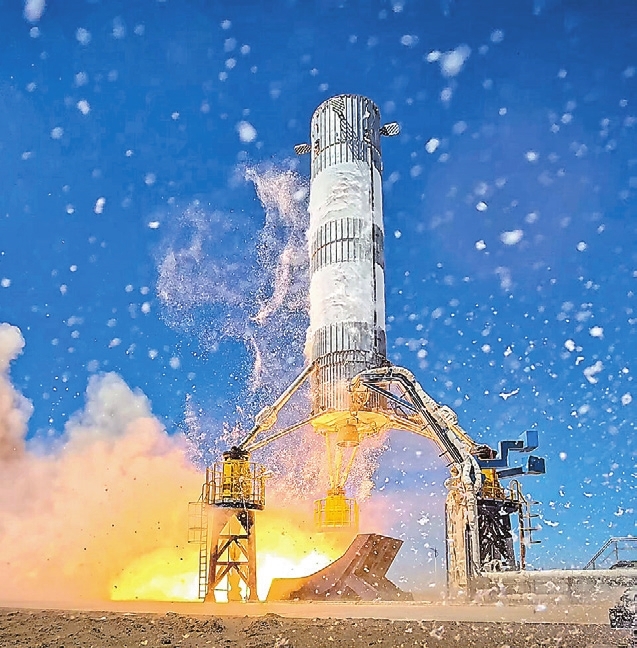
LANDSPACE Technology has conducted the first vertical takeoff and landing test with its reusable carrier rocket, becoming the first private Chinese aerospace company to achieve such a milestone. The Zhuque-3 reusable test rocket successfully took off, ascended to 10 kilometers, shut down the engine, performed a power-off glide, restarted its engine in-flight, and landed softly at a designated location at the Jiuquan Satellite Launch Center in Northwest China on Wednesday, the Beijing-based company announced. China’s first reusable rocket’s vertical takeoff and landing test that reached an altitude of 10 km was performed in June by State-owned China Aerospace Science and Technology Corporation. Zhuque-3’s test is a significant breakthrough in China’s commercial space sector, marking a crucial step towards realizing high-capacity, low-cost, high-frequency, and reusable space launches, LandSpace said. Zhuque-3 is expected to complete its first official maiden flight next year and be able to recycle its components in 2026. The global leader in reusable rockets is SpaceX. Founded by Elon Musk, the company completed its first rocket recovery with the Falcon 9 in 2015. Since then, it has carried out more than 300 rocket launches and recovery missions to support the deployment of its communication satellite constellation Starlink. Rocket recovery technology is essential to reduce the development costs of large satellite constellations. In China, sending 1 kilogram of payload into space costs about US$10,000, which translates to about US$2 million per low-orbit communication satellite, according to Lin Baojun, chief designer of China’s satellite navigation system Beidou-3. In comparison, SpaceX spends only about US$750,000 to launch a Starlink satellite. Several Chinese commercial aerospace companies have already begun building their communication satellite constellations to rival Starlink. (SD-Agencies) | 
